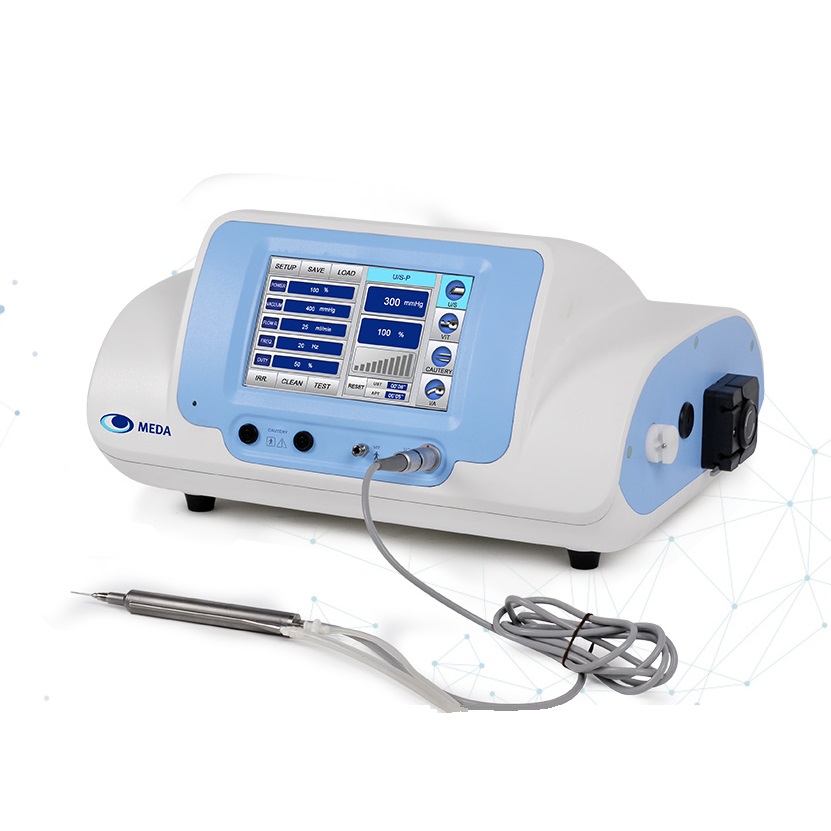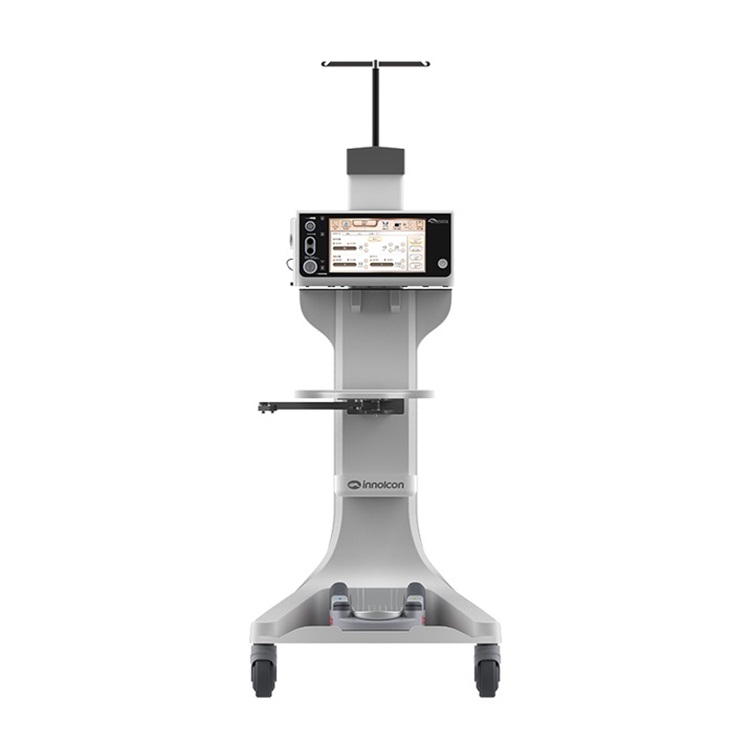phacoemulsifier for cataract


中文介绍
- 定义与用途:白内障超声乳化仪是一种专门用于治疗白内障的医疗器械,是目前白内障手术的主要设备之一,通过超声技术将混浊的晶状体乳化并吸出,然后植入人工晶状体,以恢复患者视力。
- 工作原理:其核心原理是利用超声换能器,将电能转化为高频超声能量。超声探头伸入眼内,高频振动产生的超声能量可将白内障晶状体核及皮质粉碎成乳糜状,再通过负压吸引系统将乳化后的晶状体物质吸出,从而清除混浊晶状体,为植入人工晶状体创造条件。
- 治疗病症:主要用于治疗各种类型的白内障,包括年龄相关性白内障、先天性白内障、外伤性白内障、代谢性白内障等。无论晶状体混浊程度如何,只要白内障影响到患者的日常生活和工作,且符合手术适应证,均可考虑使用该设备进行手术治疗。
- 设备组成:一般由超声乳化手柄、负压吸引系统、灌注系统、控制系统等部分组成。超声乳化手柄是关键部件,内含超声换能器和超声探头,负责产生和传递超声能量。负压吸引系统用于吸出乳化后的晶状体碎片。灌注系统则通过向眼内灌注平衡盐溶液等液体,维持眼内压稳定,保证手术安全进行。控制系统可调节超声能量、负压大小、灌注流量等参数,以适应不同手术需求。
- 手术优势:与传统的白内障囊外摘除术等相比,使用白内障超声乳化仪进行手术具有切口小(通常为 2.2 – 3.0 毫米),术后角膜散光小,视力恢复快,手术时间短,术中及术后并发症少等优点,能极大提升患者的手术体验和治疗效果。
- 发展趋势:随着技术不断进步,白内障超声乳化仪朝着智能化、精准化方向发展。新型设备具备更先进的能量管理系统,可更精确地控制超声能量输出,减少对眼内组织的损伤。同时,设备的操作界面也越来越人性化,便于医生操作,且与其他眼科设备的兼容性更强,能为白内障手术提供更高效、安全的解决方案。
英语介绍
- Definition and use:The cataract phacoemulsifier is a medical device specifically designed for the treatment of cataracts. It is one of the main equipment for cataract surgery. It emulsifies and aspirates the turbid lens through ultrasonic technology, and then implants an intra – ocular lens to restore the patient’s vision.
- Working principle:Its core principle is to use an ultrasonic transducer to convert electrical energy into high – frequency ultrasonic energy. The ultrasonic probe is inserted into the eye, and the ultrasonic energy generated by high – frequency vibration can crush the cataract lens nucleus and cortex into a chylous state. Then, the emulsified lens substances are aspirated out through the negative pressure aspiration system, so as to remove the turbid lens and create conditions for the implantation of an intra – ocular lens.
- Treatable diseases:It is mainly used to treat various types of cataracts, including age – related cataracts, congenital cataracts, traumatic cataracts, and metabolic cataracts. Regardless of the degree of lens opacity, as long as the cataract affects the patient’s daily life and work and meets the surgical indications, surgery using this device can be considered.
- Equipment composition:It is generally composed of parts such as a phacoemulsification handpiece, a negative pressure aspiration system, an irrigation system, and a control system. The phacoemulsification handpiece is a key component, which contains an ultrasonic transducer and an ultrasonic probe, and is responsible for generating and transmitting ultrasonic energy. The negative pressure aspiration system is used to aspirate the emulsified lens fragments. The irrigation system maintains the stability of intra – ocular pressure by irrigating the eye with balanced salt solution and other liquids, ensuring the safety of the operation. The control system can adjust parameters such as ultrasonic energy, negative pressure, and irrigation flow to meet different surgical needs.
- Surgical advantages:Compared with traditional extracapsular cataract extraction and other surgeries, surgery using a cataract phacoemulsifier has the advantages of a small incision (usually 2.2 – 3.0 mm), less postoperative corneal astigmatism, rapid visual recovery, short operation time, and fewer intraoperative and postoperative complications, which can greatly improve the patient’s surgical experience and treatment effect.
- Development trend:With the continuous progress of technology, cataract phacoemulsifiers are developing in the direction of intelligence and precision. New – type equipment is equipped with more advanced energy management systems, which can more accurately control the output of ultrasonic energy and reduce damage to intra – ocular tissues. At the same time, the operation interface of the equipment is becoming more and more user – friendly, which is convenient for doctors to operate, and it has stronger compatibility with other ophthalmic equipment, providing a more efficient and safe solution for cataract surgery.
